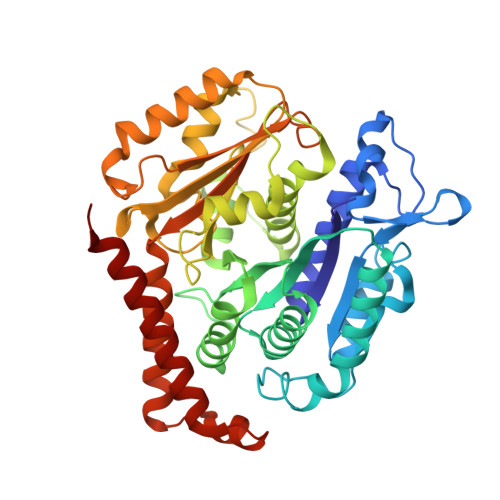A structural and dynamic visualization of the interaction between MAP7 and microtubules.
Adler, A., Bangera, M., Beugelink, J.W., Bahri, S., van Ingen, H., Moores, C.A., Baldus, M.(2024) Nat Commun 15: 1948-1948
- PubMed: 38431715
- DOI: https://doi.org/10.1038/s41467-024-46260-5
- Primary Citation of Related Structures:
8RC1 - PubMed Abstract:
Microtubules (MTs) are key components of the eukaryotic cytoskeleton and are essential for intracellular organization, organelle trafficking and mitosis. MT tasks depend on binding and interactions with MT-associated proteins (MAPs). MT-associated protein 7 (MAP7) has the unusual ability of both MT binding and activating kinesin-1-mediated cargo transport along MTs. Additionally, the protein is reported to stabilize MTs with its 112 amino-acid long MT-binding domain (MTBD). Here we investigate the structural basis of the interaction of MAP7 MTBD with the MT lattice. Using a combination of solid and solution-state nuclear magnetic resonance (NMR) spectroscopy with electron microscopy, fluorescence anisotropy and isothermal titration calorimetry, we shed light on the binding mode of MAP7 to MTs at an atomic level. Our results show that a combination of interactions between MAP7 and MT lattice extending beyond a single tubulin dimer and including tubulin C-terminal tails contribute to formation of the MAP7-MT complex.
- NMR Spectroscopy, Bijvoet Center for Biomolecular Research, Utrecht University, Padualaan 8, 3584 CH, Utrecht, The Netherlands.
Organizational Affiliation:





















